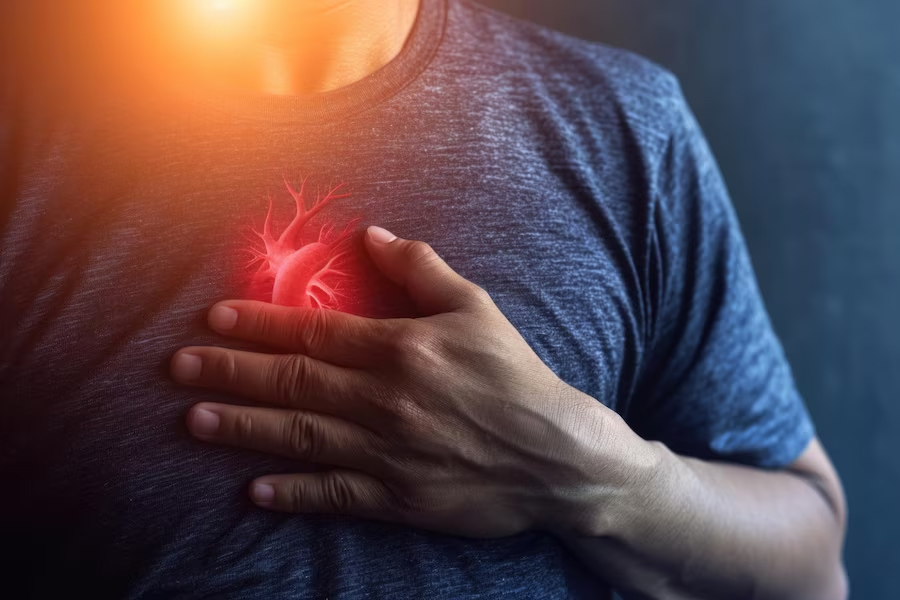
Nearly 10 hours into its journey from London to Singapore, a Singapore Airlines flight encountered severe turbulence, resulting in one passenger's death and multiple injuries. The aircraft, a Boeing 777-300ER, had to be diverted to Bangkok due to the emergency. Officials reported that a total of 30 individuals, including passengers and crew members, were injured. Out of these, 18 were hospitalised and another 12 received medical attention. The remaining passengers and crew were evaluated and treated as needed at Bangkok’s Suvarnabhumi International Airport.
Table of Content:-
Details about the deceased passenger are limited. Authorities confirmed that a 73-year-old British man passed away onboard, likely due to a heart attack, according to AP. His wife also sustained injuries during the turbulence and was taken to a hospital for treatment.

Factor That Lead To Turbulence
Turbulence can cause significant stress and anxiety, which can elevate heart rate and blood pressure. This is particularly dangerous for individuals with pre-existing heart conditions, potentially triggering a heart attack.
Also read: Coronavirus Update: Air India Run Flights To China To Bring Back Indians
Preventive Measures Before the Flight
To mitigate the risk of a heart attack triggered by turbulence, passengers, especially those with heart conditions, can take several preventive steps before boarding a flight.
1. Medical Consultation
Before travelling, individuals with known heart conditions should consult their healthcare provider. A medical professional can assess the risks, adjust medications if necessary, and provide specific advice tailored to the individual's health status. Carrying a letter from the doctor detailing the condition and medications is also advisable.
2. Medication Management
Ensuring that all prescribed medications are taken as directed is crucial. Passengers should keep their medications in their carry-on luggage for easy access. In some cases, doctors might prescribe additional medication, such as anti-anxiety drugs or nitroglycerin tablets, to manage symptoms during the flight.
3. Pre-Flight Preparation
Minimising stress before the flight can help. This includes:
- Arriving at the airport early to avoid rushing.
- Using online check-in to reduce time spent in queues.
- Choosing comfortable seating, such as an aisle seat, for more space and easier access to the restroom.
Measures During Flight
Once on board, there are several strategies passengers can employ to reduce the impact of turbulence on their heart health.
1. Stay Hydrated
Dehydration can exacerbate the physical effects of stress. Drinking plenty of water before and during the flight helps maintain proper hydration levels, which is beneficial for cardiovascular health.
2. Avoid Stimulants
Caffeine and alcohol can increase heart rate and blood pressure. Limiting or avoiding these substances before and during the flight can help keep the heart rate stable.

3. Relaxation Techniques
Practising relaxation techniques can significantly reduce stress levels:
- Deep Breathing: Taking slow, deep breaths can help calm the nervous system. Inhale slowly through the nose, hold for a few seconds, and exhale slowly through the mouth.
- Progressive Muscle Relaxation: Tense and then relax different muscle groups in the body. This method can alleviate physical tension caused by anxiety.
- Mindfulness and Meditation: Focusing on the present moment through mindfulness exercises or guided meditation can distract from the turbulence and reduce anxiety.
Also read: Healthy Travel FAQs: WHO On Safety Measures While Taking Flights In This Pandemic Phase
4. Use of Anxiety Medications
If prescribed by a doctor, using anti-anxiety medication can help manage severe anxiety during turbulence. It's important to take these medications as directed and to avoid overuse.
Knowing When to Seek Help
Despite all precautions, there might be instances where a passenger feels unwell during the flight. Recognising the signs of a heart attack and knowing when to seek help is crucial:
- Chest Pain or Discomfort: This might feel like pressure, squeezing, fullness, or pain in the centre of the chest.
- Discomfort in Other Areas: Pain or discomfort in one or both arms, the back, neck, jaw, or stomach.
- Shortness of Breath: This can occur with or without chest discomfort.
Other Symptoms: Cold sweat, nausea, or lightheadedness.
If any of these symptoms occur, it's vital to inform the flight attendants immediately. Airlines have protocols for medical emergencies, and many flights carry automated external defibrillators (AEDs) and emergency medical kits. Crew members are trained to handle such situations and can provide necessary assistance until the plane lands or medical professionals can be reached.
Turbulence can cause significant stress and pain for airline passengers; understanding its effects on the body and adopting precautions might help reduce the risk of a heart attack. Individuals with pre-existing heart issues should check with a healthcare physician, manage their medications properly, and practise relaxation techniques to ensure safe and stress-free air travel. Being proactive and prepared allows travellers to enjoy their flights with more peace of mind and less health hazards.
Also watch this video
How we keep this article up to date:
We work with experts and keep a close eye on the latest in health and wellness. Whenever there is a new research or helpful information, we update our articles with accurate and useful advice.
Current Version